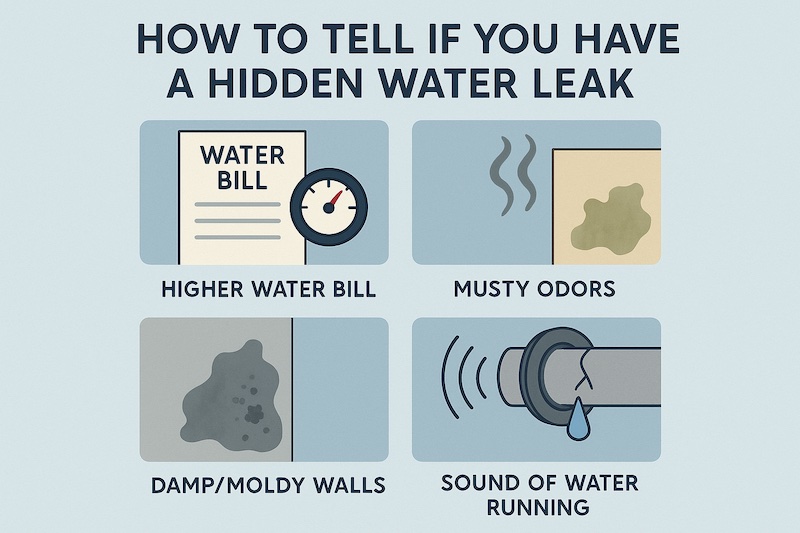How to Tell If You Have a Hidden Water Leak

Water leaks can be sneaky, causing damage and raising your bills before you even notice them. While some leaks are obvious, like a dripping faucet or running toilet, hidden water leaks are harder to spot but just as damaging. Here’s how to detect them early and prevent costly problems.
1. Monitor Your Water Bill
One of the first signs of a hidden leak is an unusually high water bill. Compare your recent bills to previous months—if there’s a spike without increased usage, it may indicate a leak somewhere in your system.
2. Check Your Water Meter
Turn off all faucets and water-using appliances, then check your water meter. If it’s still moving, water is leaking somewhere in your home. This is one of the simplest and most effective ways to detect a hidden leak.
3. Inspect Walls, Floors, and Ceilings
Look for water stains, peeling paint, or warped flooring. Even small discolorations can indicate water is seeping behind walls or under floors. These leaks often start small but can cause structural damage over time.
4. Listen for Unusual Sounds
A constant dripping, hissing, or running water sound when no taps are on is a strong sign of a hidden leak. Pay attention to unusual noises inside walls or under floors.
5. Test Your Toilets
Toilets are a common source of hidden leaks. Add a few drops of food coloring to the toilet tank and wait 10–15 minutes without flushing. If the color appears in the bowl, you have a leak.
6. Check Outdoor Water Sources
Don’t forget your outdoor faucets, irrigation systems, and sprinkler lines. Leaks here can go unnoticed for months, wasting water and money.
7. Watch for Mold or Musty Smells
Hidden leaks often create damp conditions, leading to mold or mildew growth. If you notice a musty odor or unexplained mold, it’s time to investigate for leaks.
When to Call a Professional
If you suspect a hidden leak but can’t locate it, call a licensed plumber. Early detection can prevent major water damage, costly repairs, and higher utility bills.
